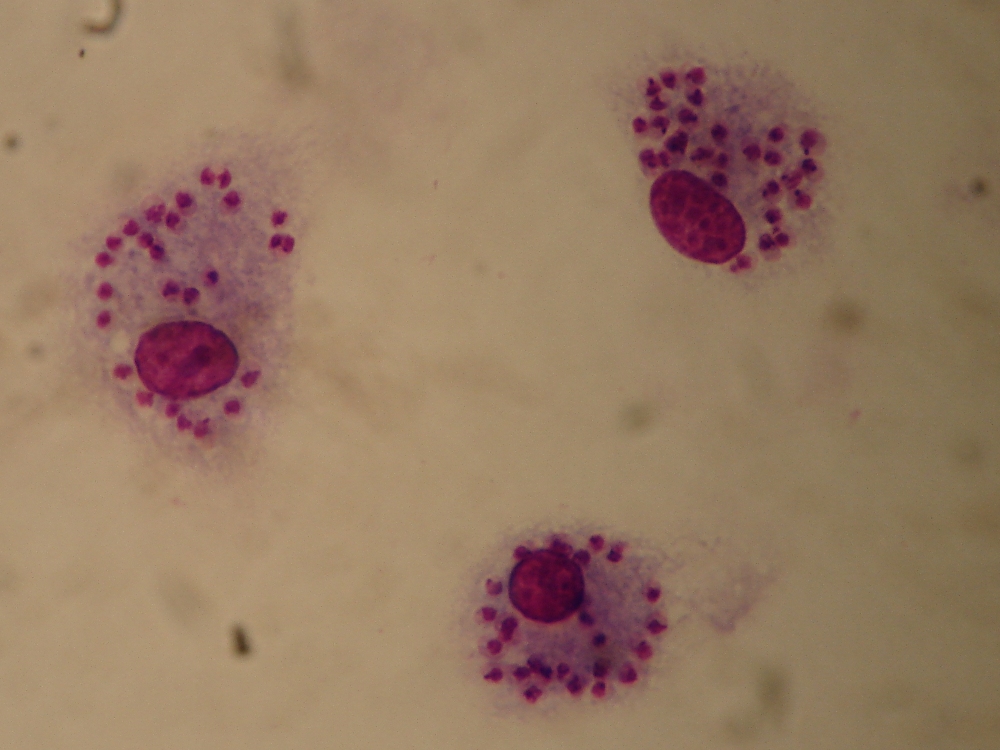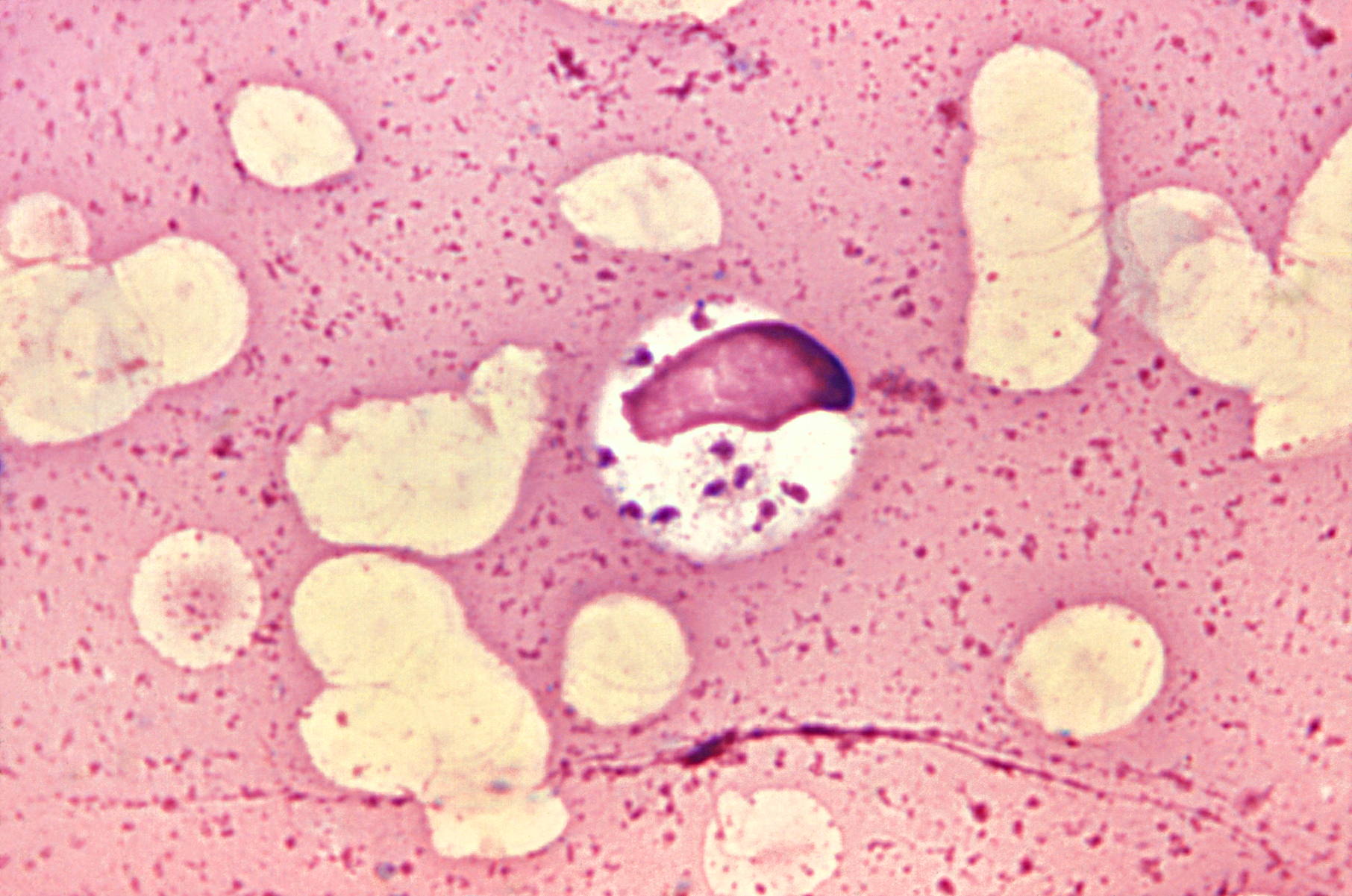|
Amastigote
An amastigote is a protist cell that does not have visible external flagella or cilia. The term is used mainly to describe an intracellular phase in the life-cycle of trypanosomes that replicates. It is also called the leishmanial stage, since in ''Leishmania ''Leishmania'' () is a genus of parasitic protozoans, single-celled eukaryotic organisms of the trypanosomatid group that are responsible for the disease leishmaniasis. The parasites are transmitted by sandflies of the genus '' Phlebotomus'' ...'' it is the form the parasite takes in the vertebrate host, but occurs in all trypanosome genera. References Kinetoplastids {{Protist-stub ... [...More Info...] [...Related Items...] OR: [Wikipedia] [Google] [Baidu] |
Trypanosomatid
Trypanosomatida is a group of kinetoplastid unicellular organisms distinguished by having only a single flagellum. The name is derived from the Greek ''trypano'' (borer) and ''soma'' (body) because of the corkscrew-like motion of some trypanosomatid species. All members are exclusively parasitic, found primarily in insects. A few genera have life-cycles involving a secondary host, which may be a vertebrate, invertebrate or plant. These include several species that cause major diseases in humans. Some trypanosomatida are intracellular parasites, with the important exception of ''Trypanosoma brucei''. Medical importance The three major human diseases caused by trypanosomatids are; African trypanosomiasis (sleeping sickness, caused by ''Trypanosoma brucei'' and transmitted by tsetse flies), South American trypanosomiasis (Chagas disease, caused by '' T. cruzi'' and transmitted by triatomine bugs), and leishmaniasis (a set of trypanosomal diseases caused by various species of ''L ... [...More Info...] [...Related Items...] OR: [Wikipedia] [Google] [Baidu] |
Leishmania Amastigotes
''Leishmania'' () is a genus of parasitic protozoans, single-celled eukaryotic organisms of the trypanosomatid group that are responsible for the disease leishmaniasis. The parasites are transmitted by sandflies of the genus '' Phlebotomus'' in the Old World, and of the genus '' Lutzomyia'' in the New World. There are 53 species and about 20 of them are responsible for human infections. They are transmitted by around 100 species of sandflies. The primary hosts are vertebrates. They commonly infect hyraxes, canids, rodents, and humans. History Members of an ancient genus of ''Leishmania''-like parasites, '' Paleoleishmania'', have been detected in fossilized sand flies dating back to the early Cretaceous period. The first written reference to the conspicuous symptoms of cutaneous leishmaniasis surfaced in the Paleotropics within oriental texts dating back to the 7th century BC (allegedly transcribed from sources several hundred years older, between 1500 and 2000 BC). Due to it ... [...More Info...] [...Related Items...] OR: [Wikipedia] [Google] [Baidu] |
Leishmania
''Leishmania'' () is a genus of parasitic protozoans, single-celled eukaryotic organisms of the trypanosomatid group that are responsible for the disease leishmaniasis. The parasites are transmitted by sandflies of the genus '' Phlebotomus'' in the Old World, and of the genus '' Lutzomyia'' in the New World. There are 53 species and about 20 of them are responsible for human infections. They are transmitted by around 100 species of sandflies. The primary hosts are vertebrates. They commonly infect hyraxes, canids, rodents, and humans. History Members of an ancient genus of ''Leishmania''-like parasites, '' Paleoleishmania'', have been detected in fossilized sand flies dating back to the early Cretaceous period. The first written reference to the conspicuous symptoms of cutaneous leishmaniasis surfaced in the Paleotropics within oriental texts dating back to the 7th century BC (allegedly transcribed from sources several hundred years older, between 1500 and 2000 BC). D ... [...More Info...] [...Related Items...] OR: [Wikipedia] [Google] [Baidu] |
Protist
A protist ( ) or protoctist is any eukaryotic organism that is not an animal, land plant, or fungus. Protists do not form a natural group, or clade, but are a paraphyletic grouping of all descendants of the last eukaryotic common ancestor excluding land plants, animals, and fungi. Protists were historically regarded as a separate taxonomic kingdom known as Protista or Protoctista. With the advent of phylogenetic analysis and electron microscopy studies, the use of Protista as a formal taxon was gradually abandoned. In modern classifications, protists are spread across several eukaryotic clades called supergroups, such as Archaeplastida ( photoautotrophs that includes land plants), SAR, Obazoa (which includes fungi and animals), Amoebozoa and " Excavata". Protists represent an extremely large genetic and ecological diversity in all environments, including extreme habitats. Their diversity, larger than for all other eukaryotes, has only been discovered in rece ... [...More Info...] [...Related Items...] OR: [Wikipedia] [Google] [Baidu] |
Flagellum
A flagellum (; : flagella) (Latin for 'whip' or 'scourge') is a hair-like appendage that protrudes from certain plant and animal sperm cells, from fungal spores ( zoospores), and from a wide range of microorganisms to provide motility. Many protists with flagella are known as flagellates. A microorganism may have from one to many flagella. A gram-negative bacterium '' Helicobacter pylori'', for example, uses its flagella to propel itself through the stomach to reach the mucous lining where it may colonise the epithelium and potentially cause gastritis, and ulcers – a risk factor for stomach cancer. In some swarming bacteria, the flagellum can also function as a sensory organelle, being sensitive to wetness outside the cell. Across the three domains of Bacteria, Archaea, and Eukaryota, the flagellum has a different structure, protein composition, and mechanism of propulsion but shares the same function of providing motility. The Latin word means " whip" to describe its ... [...More Info...] [...Related Items...] OR: [Wikipedia] [Google] [Baidu] |
Cilium
The cilium (: cilia; ; in Medieval Latin and in anatomy, ''cilium'') is a short hair-like membrane protrusion from many types of eukaryotic cell. (Cilia are absent in bacteria and archaea.) The cilium has the shape of a slender threadlike projection that extends from the surface of the much larger cell body. Eukaryotic flagella found on sperm cells and many protozoans have a similar structure to motile cilia that enables swimming through liquids; they are longer than cilia and have a different undulating motion. There are two major classes of cilia: ''motile'' and ''non-motile'' cilia, each with two subtypes, giving four types in all. A cell will typically have one primary cilium or many motile cilia. The structure of the cilium core, called the axoneme, determines the cilium class. Most motile cilia have a central pair of single microtubules surrounded by nine pairs of double microtubules called a 9+2 axoneme. Most non-motile cilia have a 9+0 axoneme that lacks the centr ... [...More Info...] [...Related Items...] OR: [Wikipedia] [Google] [Baidu] |



